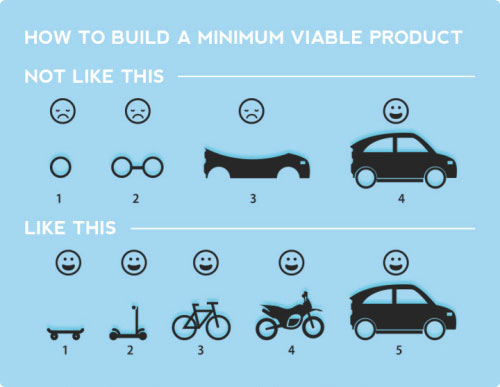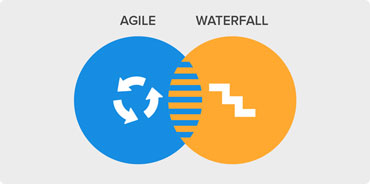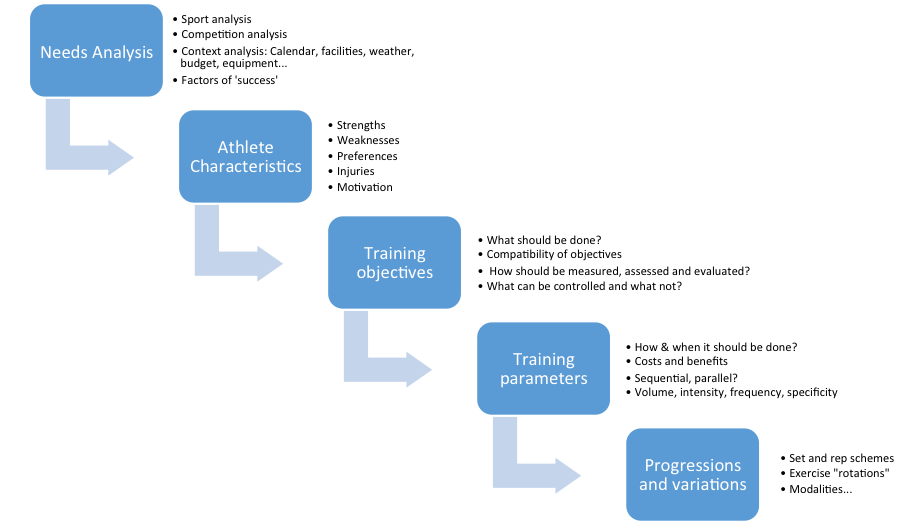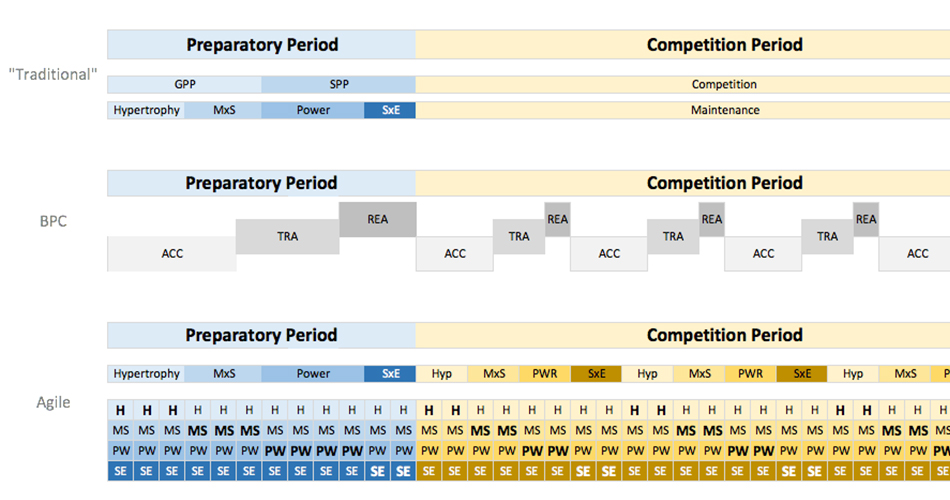Agile Periodization Manifesto – Part 1
“The only way to win is to learn faster than anyone else.”
This article is my attempt to create workable principles and guidelines of Agile Periodization. I have written extensively about the idea in numerous posts and I let the idea to simmer for some time in my head – now I think I have MVP (minimum viable product) that could be used as a starting point to be adjusted and updated over time (I will come back to MVP when I discuss sprints phases).

There are NO given set and reps schemes, block/phases, terminology, progressions and so forth associated with Agile Periodization – what is there are defined processes that you can use with your own planning and your own approaches. Agile Periodization is about learning and finding the best possible solution(s) for your own problems while taking into account risks and uncertainties.
The main difference between agile periodization and the “traditional” (let’s call it waterfall) approach is acknowledging the uncertainty and risk ahead and taking that into account when planning. That means avoiding over planning, where the yearly plan is laid out in detail and later followed to the letter. This does not mean Agile Periodization is against long term planning – we still need some elements of “waterfall” planning, but Agile implements iterative planning over time using shorter cycles.

Agile Periodization is mainly influenced by SCRUM and Agile/Lean approaches in software development, production and project management in general.
Main cycles of Agile Periodization
The two main cycles of Agile Periodization are:
- Release plans or blocks (consists of 2 or more sprints)
- Sprints (usually 1-4 weeks long)
In other way, these two cycles are what Mike Tuchscherer refers to as Planned Strategy and Emergent Strategy (click HERE to read Mike’s great article)
Release plans or blocks
“As complexity raises, meaningful statements lose precision and precise statements lose meaning”
Release plans or training blocks are longer and more generally defined training periods. These periods have elements of “waterfall” planning and are laid out in advance. Training blocks hence represent Strategic Planning.
Most “traditional” approaches in planning represent waterfall method – see for example picture from Set and Reps article:

This is not to say that waterfall is bad or not needed, but it is not enough in managing risk and uncertainty of the training process. This process of planning needs to be re-iterated numerous times (and that is the purpose of the sprint phases). Anyway, we still utilize some elements of a waterfall in devising block phases, but we deal with the most certain elements, constraints and objectives.
Having said that, the first step in devising a training plan is to lay out the most stable/certain elements, like competition dates (if they are known), holidays, breaks and so forth. Then we lay down training blocks in most general way.
The guiding principles (complementary pairs) of training blocks are the following:
- Weaknesses ~ Strengths
- Skill ~ Ability
- Individual characteristics ~ Sport/Position demands
- Structure ~ Function and Potential ~ Realization
- Develop ~ Express
- Objectives ~ Context
- Saturate ~ Dissipate (i.e. concentrated vs. distributed load)
- Stability ~ Variability
- Biology ~ Risk/Administration
- Improve ~ Stabilize
- Simulate ~ Stimulate
- Risk ~ Reward
- Predictable ~ Unpredictable
- General ~ Specific
- Work ~ Rest
- Volume ~ Intensity; Extensive ~ Intensive; Frequency ~ Load
- Adapt to player ~ Force player to adapt
- Team ~ Individual
- Subtle ~ Abrupt (referring to link between blocks)
Each block can/should put more or less emphasis on a given complementary aspect of planning and planning in general should solve these conundrums. Covering each would take the whole book – maybe I should write one, but in the mean time check some of them HERE.
It is important to remember that laid plan is flexible – the starts/stops and, consequently, duration of the blocks can and should change as we gain more information during the actual actualization of the plan.
There are no given block names in Agile Periodization – make sure to name them based on your own unique situation and needs. For example, preparatory period could put more emphasis on development than expression, more on work than rest, could be more saturated (concentrated) and can risk more since there is larger wiggle room, as well forcing the player to adapt to workload than adapting workload to the player.
The blocks could also be hierarchical or have multiple levels. It is completely up to you how you are going to name them and structure them. It is also important to define the link between blocks (as well as sprints) as well – it could be abrupt or smooth transition, but it should be sequenced in a logically and biologically acceptable way.
The training blocks define constraints or guidelines for the sprints to follow.

The important component of Training Block is standardized work – or current best practices in reaching and monitoring planned objectives. This is important so we don’t let things slip through the cracks, so we don’t reinvent the wheel every time and we don’t waste much time and energy with decision making. This knowledge can come from previous experience and research, and looking from Bayesian approach it represents apriori beliefs. There are numerous written books on the topic of standardized work in Lean management, and also great book by Atul Gavande “Checklist Manifesto”. Having standardized work and checklists defined represents our starting point and conditioning that will converge over sprints iterations to the best solution for our circumstances while we collect more evidence and information through embedded testing and monitoring. Having this structure allows us to learn and adapt (i.e. be agile) in the fastest way possible.
End of Part One. To be continued…











Responses